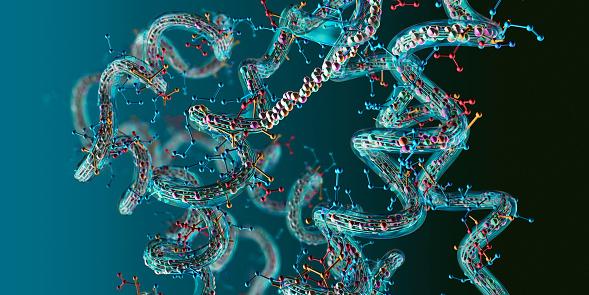USP researchers in an international partnership, developed a new technique that can detect interactions between proteins and cellular metabolites. MIDAS and the latest findings are published in a paper in the journal Science.
Billions of reactions take place in our cells every day. Some of these interactions may initiate or indicate the development of a disease.
That’s why researchers are focusing on developing techniques and approaches that can figure out, perhaps predict, which of these links is useful or not.
However, there are many challenges to understanding all reactions, interactions and cell functioning under certain conditions, for example: sensitivity of instruments and detection techniques.
Maria Cristina Nonato, co-author of the paper and professor in the Ribeirão Preto School of Pharmaceutical Sciences (FCFRP) at USP, explained in an interview with the USP newspaper that metabolic pathways communicate and thus reach equilibrium.
“However, these interactions are of low immediacy, very difficult to detect with current techniques. It’s very subtle talk, like a whisper,” Nonato explains to the USP newspaper.

In light of these limitations, international collaboration developed a new technique called MIDAS. (Dialysis combined with mass spectrometry for systematic allosteric discovery, literal translation).
MIDAS manages to capture this whisper and demonstrates the reactions between proteins and the resulting metabolic products. At first, the team analyzed 33 enzymes and 400 metabolites, observing the cellular behavior in metabolizing carbohydrates.
In addition to those already known, the researchers were able to identify 830 interactions between proteins and metabolites, including new observations of the regulation and production of products and byproducts, among other interactions.

The research is extremely relevant because knowing how metabolic pathways communicate, regulate and interact biochemically, may be the key to understanding how some diseases develop.
Once the disease mechanism and disease process are known, treatments with clearer therapeutic goals, better outcomes, and effective management of diseases and health conditions can be considered. Scientists are optimistic about MIDAS and the possibilities for more sensitive detection.
Research will continue to focus on other metabolic pathways, looking at proteins and potential uses of enzyme-metabolite interactions.
Source: Tec Mundo
I’m Blaine Morgan, an experienced journalist and writer with over 8 years of experience in the tech industry. My expertise lies in writing about technology news and trends, covering everything from cutting-edge gadgets to emerging software developments. I’ve written for several leading publications including Gadget Onus where I am an author.












